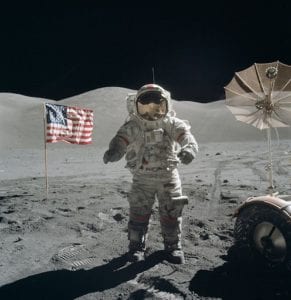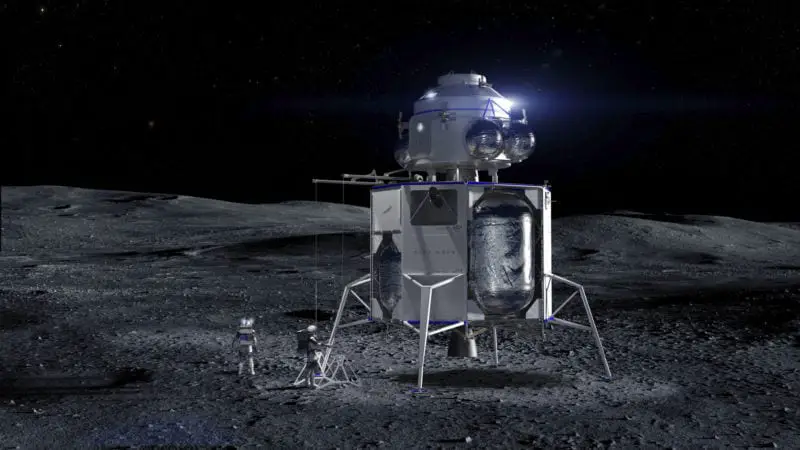“Our goal is to establish an enduring private space program that opens the path for you to travel in space. Within fifteen years, you will be able to take a two-week trip to the moon at a price you would expect to pay for the luxury-class European capital tour. The name of the mission is The Artemis Project.”
The membership list for The Artemis Society is a wormhole of Geocities sites and Myspace pages. Contact details are for AOL, Compuserve, Genie or Panix email addresses. I’m looking at a snapshot of the site as it existed in 1998 – only a few years after the World Wide Web came into being, and at a time when getting connected was difficult, slow, and expensive.
It was also barely two decades since a human had last walked on the surface of the moon. Starting in 1994, the Artemis Society was determined to place adventurers on the lunar crust once again. Industries were envisioned, and The Lunar Resources Company was incorporated with an unimaginably bold aim: “To advance and engage in space flight as a commercial enterprise, to establish and operate a permanent manned lunar base, and to transact any and all lawful business – on Earth, in outer space, and on other celestial bodies.”

The company promised two week long trips at a price equivalent to that of a european vacation, and it promised an ambitious timeframe of 15 years – a target now well and truly abandoned.
The Artemis Society was founded and run by volunteers, located in chapters across the United States and the wider world. Their plan was simple – pool together the expertise, research, and resources of hundreds or thousands of individuals, and make their lunar base an attractive commercial proposition.
It sounds like the plot of a science fiction novel, and yes, several of the members were published science fiction authors, with novels and short stories to their names. But there were also more serious, technologically competent volunteers on board. People with the knowhow and enthusiasm to get the Artemis project off the ground and into the stars.

Where Are They Now?
Margo Duesterhaus, the Mid-Atlantic Artemis Society contact, was a senior programmer and section manager at NASA’s Goddard Space Flight Centre in Maryland. Society president, Boise Pearson, is currently the Engine Lead, Nuclear Thermal Propulsion at NASA’s Marshall Space Flight Center, and has worked on the Europa Projects and in the agency’s mysteriously named Advanced Concepts Office.
There is an array of professors, doctors, developers, and dreamers. Some of whom listed their own home addresses along with their now defunct email contact details.
But 1998 is a long time ago, and on the cusp of the 21st century’s third decade, most people are far less willing to share their personal details online.
Tracking down Artemis Society contacts proved problematic.
The Lunar Resources Company website was last updated in 2006, before being taken over and repurposed as a China based jobs board in late 2009. To the very end, it proudly displayed an animated GIF as the masthead, showing a rotating slideshow of space-based projects and the words, “We’re going back…to stay…to expand… forever…You can come too.” The last snapshot of the site, as archived by the Wayback Machine, triggered our antivirus software as a decade old Trojan was revived, zombie-like, and attempted to install itself on our machine.

Lunar Traders, a spinoff company selling branded t-shirts, mugs, and Final Frontier Beef Jerky, survived until 2006. Its final banner mourned the death of Gordon Cooper, who was at the time the last astronaut to fly alone in space. In early 2007, the only message on the site read, “Sorry. We are closed.” Lunar Traders was taken over by squatters in 2010, and the developer, Tim Cadell, now works as a software engineer at FriendFinder, Inc.
Mr. Cadell was one of only eight people involved in the Artemis Society whose details we managed to track down, and although we invited all eight to be interviewed for this article, we received no response from any of them.
The search led us across a microcosm of the web’s evolution. From Geocities personal pages, through to abandoned blogger and later WordPress accounts. Eventually, we arrived at Facebook, Twitter, and LinkedIn profiles.

All too often, our final destination was the obituary page of a local newspaper. One of these was for Nancy Brasket, director of communications at the Artemis Project, and the one person we were sure would be willing to speak to us.
Nancy died in 1999, and it seems that the ambitious project for which she volunteered did not survive her for long.
The Artemis Society was a product of its time. A desperate yearning for mankind to return to the stars, using the moon as a jumping-off point, manufacturing hub, and holiday destination. At its inception, funding for NASA was at an all time low, although it is even lower now.
The same urge which sparked the foundation of the Artemis Society also lit a rocket under private individuals and companies who dreamed of extraterrestrial glory. In 2001, South African entrepreneur Elon Musk dreamed up the Mars Oasis project, the aim of which was to land a miniature experimental greenhouse and grow plants on Mars. SpaceX was founded in 2002 and now employs more than 7,000 people. It is a commercial success, having earned tens of billions of dollars from its core business of developing, and launching rockets. They occasionally land them too.
Musk’s ambitions far outstrip those of enthusiastic amateurs who made up the Artemis Society. He envisions a thriving human colony on the red planet by 2035, with thousands of rockets flying millions of people across the gulf of space.
Aerospace giant Boeing is also gearing up for interstellar action with its upcoming CST-100 Starliner, having entered into a commercial agreement with Virginia-based Space Adventures Ltd to sell tourist-class tickets to the International Space Station.
With this trend of space adventure companies, you would be forgiven for thinking that we’ve travelled back to the heady, inspired days of 1994 once again.
In the end it doesn’t matter whether the first off-world colony is facilitated by an eccentric billionaire adventurer, a roomful of CEOs, or an enthusiastic conglomeration of eccentrics stretching across the globe. It doesn’t matter whether it’s on the moon, or Mars, or in the asteroid belt.
What matters is that it actually happens.

